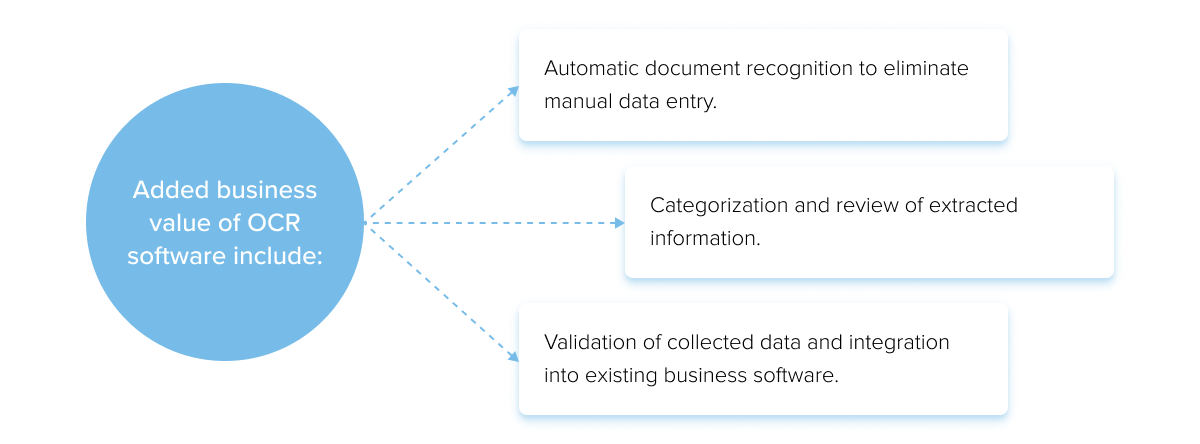We are living in the age of Big Data. And since 80% of data within the enterprise is unstructured, unstructured data management makes an important part of the processing infrastructure.
However, the challenges of storing and managing unstructured data are still widely present. Social media posts, voice recordings, images, and others stalk organizations and get accumulated in silos. A study by IDC estimates that by 2025, there will be 175 trillion gigabytes of information. In other words, we’ll have enough data to fill up the DVD stacks to another planet.
On the other side, cloud computing and AI tools seem to save the day with robust processing and storing capabilities. They are introducing new ways to manage prolific unstructured input without spending physical or manual resources.
With that said, let’s find out how artificial intelligence can help us tame the oceans of information and the main challenges of managing unstructured data.
What is unstructured data?
The digital revolution and the proliferation of Big data have led to massive amounts of information. The latter flows from countless devices, touchpoints, and business systems, creating hard-to-manage zettabytes. Thus, there were 79 zettabytes of data generated worldwide in 2021.
The revolution has also spawned a wide variety of info types for companies to take care of. These include the following types:
- Structured – highly organized, factual, and accurate information. It is usually in the form of letters and numbers that fit well into the rows and columns of tables. Structured data typically exists in spreadsheets like Excel files and comes from ERP systems or transactions.
- Unstructured – information with no predetermined structure that arrives in all sorts of forms. Examples of unstructured stimuli range from images and text files, such as PDF documents, to video and audio files.

Source: Unsplash
Each of these types poses unique challenges in developing a management strategy that keeps information confidential and secure and compliant with regulations.
In particular, unstructured input has no unified format, so managing it within a coherent management strategy is not easy. However, structured and unstructured data management is still necessary since both can contain business-critical information for organizations.
Main challenges of managing unstructured data
Unstructured free-form input is one of the biggest challenges that businesses face today. The volume, variety, and velocity of this information type can be overwhelming. They also make it difficult for companies to find the insights that can drive decision-making. With that said, let’s have a look at the most popular challenges of managing unstructured data.
Overflowing data centers
The ever-growing inflow of rearranged information generates new demand for storage space, which adds to the challenges. Traditional on-premise infrastructure usually fails to meet the demand due to an insufficient power grid. Therefore, having the right place to store these insights efficiently is critical. Also, companies need to be able to track and predict the required storage growth to plan for storage expansion.

Source: Unsplash
From terabytes to petabytes
Long gone are the days when companies had to process terabytes of insightful information. Today, the number is much higher – multiple petabytes of information. One petabyte is equivalent to 1,000 terabytes.
Therefore, the volume of unstructured data is growing at an alarming rate, and the enterprise must find a way to tame this beast in order to stay competitive. Again, this ‘dark matter’ of data cannot be managed with legacy storage solutions. As a result, most enterprises may have difficulty finding the right architecture.
Unorganized, raw, and irrelevant
Since all information is packed into scattered free-form insights that come in zillion formats, identifying the relevance of insights is also difficult. Therefore, traditional data processing and analysis will not be enough to derive business value from this information. Instead of standard numerical or statistical analysis methods, organizations have to find new and more advanced ways of identifying patterns, trends, and meaning.
Siloed data
Siloed information is a widespread issue among organizations that deal with unstructured insights. Siloed data is input that is stored in isolated systems, meaning it’s not connected to other information that could be used to improve its accuracy or completeness.
Usually, this occurs because different parts of an organization operate on different information systems, and the different systems don’t connect with one another. As a result, valuable insights that could be gleaned from cross-referencing data are lost.
While these issues seem to be a drag on effective decision-making, intelligent unstructured data management solutions can eliminate these challenges.
How to manage unstructured data
Data science has come a long way to become a powerful discipline that is ready to handle Big data. Yet, to tame oceans of information, it should join forces with robust analytical capabilities – and that is artificial intelligence.
Artificial intelligence is continuing to evolve and play an increasingly important role in data management, particularly for unstructured input. According to IBM, two-thirds of all companies agree that AI and ML are core for their data platform and analytics initiatives. Data-driven companies also took a special liking with 88% of AI-powered initiatives.
By helping automate the process of understanding and extracting value from large and varied sets, AI eliminates data science challenges and helps companies more efficiently manage and derive insights from data that would otherwise be difficult to access. This is contributing to higher productivity and improved decision-making across businesses.
Therefore, intelligent solutions can be found in all phases of the data lifecycle. Without AI, data scientists are left to waste their time on manual data preprocessing.

Therefore, smart processing systems like Intelligent Document Processing ease the strain on engineers and take over mundane and time-consuming tasks.
Unstructured data management: AI toolbox
While your in-house data scientists can do most of the AI tasks in business intelligence, it’s impractical in most cases. That is why companies turn to machine learning and AI vendors to add speed, consistency, and accuracy to their business intelligence practices. Now let’s see how artificial intelligence assists in managing unstructured data.
Natural language processing
The text information that lives online is unstructured. This means that it doesn’t have a predefined structure like a table in a database. Nevertheless, reviews, emails, and social media are the holy grail of business insights. To make use of this data, we need to process it so that we can understand it and do something with it.
That’s where natural language processing comes in. It helps data scientists make sense of unstructured facts and figures by understanding the meaning of the words and the relationships between them.
NLP models that are used to handle free-form text information include:

Overall, natural language processing is a viable non-traditional data analytics technique. It aids companies in uncovering valuable information from text, including customer surveys and complaints.
Sentiment analysis
Being an NLP branch, sentiment analysis has blossomed into a standalone unstructured data management solution. Sentiment analysis (sometimes called opinion mining) is the use of natural language processing, text analytics, and machine learning to identify and extract subjective information in reviews, comments, and social media posts. It is often used to measure customer sentiment towards a company or its products.
In recent years, sentiment analysis has become an important tool for digital marketing and online reputation management. By identifying positive and negative sentiments online, businesses can respond quickly to customer feedback and improve their products and services in real-time.

Source: Unsplash
Amazon Comprehend, for example, allows its users to perform an in-depth analysis of unstructured text information, including customer reviews. The service detects the language of the text, extracts key phrases, and recognizes people, places, brands, or events. It also determines the degree of positivity or negativity of the text, analyzes the text using tokenization and parts of speech, as well as automatically groups a set of text files by topic.
Optical character recognition
Documentation-heavy industries like finance and healthcare also resort to AI consulting services for tailored optical character recognition or OCR. The latter is an unstructured data management software that extracts handwritten text from image files. By translating texts into machine-readable characters, OCR systems hand over mundane tasks to computers. Higher-end software can also learn to handwrite. It means that its accuracy increases over time.
The system then integrates data into business workflows and uses it for further reporting.

OCR-based data entry also allows businesses to accrue numerous benefits. Along with cost reduction and higher productivity, it also increases storage space since it stores all documents in electronic format on servers. Moreover, these systems make documents editable and completely searchable. Hence, teams can look up numbers, addresses, and other differentiators.
Pattern recognition
Companies can also make sense of their free-form information with pattern recognition algorithms. The latter employs machine learning to study visual stimuli. Pattern detection is a multifaceted discipline that can be applied to most types of unstructured input. Its universal nature makes pattern recognition a lucrative market. Thus, the global image market size stood at $23.82 billion in 2019. By 2027, it is expected to hit $86.32 billion.

Source: Unsplash
A prominent example of visual input management is radiology imaging in the medical industry. Here, radiologists employ smart algorithms to identify fractures, malignant tumors, and potentially cancerous formations. In 2021, deep neural screening models were also used for COVID-19 infections.
Also, video footage from a store’s security cameras can provide insight into customers’ shopping habits, while audio recordings from customer service calls may reveal how well employees are handling difficult situations.
Computer vision
Being a pinnacle of artificial intelligence, computer vision takes the best from other smart technologies. It’s a technology that enables computers to see and understand the world in a human-like way. This field of computer science will use machine learning algorithms to identify, extract and classify images and videos.
This branch of AI also holds a special place in the analytics landscape due to its unrivaled capabilities. Retailers are adopting queue detection technology to identify wait times and minimize long lines. Computer vision also amplifies quality support systems to automatically assess the quality of the product and report non-compliant items.
Moreover, farming is also one of the industries that benefit the most from computer vision to tackle incoming IoT data. Thus, geospatial systems also rely on machine vision to analyze drone and satellite images and videos.

Now let’s see what unstructured data management solutions you can use to process the chaotic figures.
Unstructured data management solutions
Ineffective data management is a typical issue for companies that can be eliminated by applying the right toolbox. As an international Big data vendor, our team of engineers implements a unique blend of tools, frameworks, and solutions to create a seamless data flow for our clients. Each case is unique, hence you should be aware of all options to tame the beast.
Among the most popular unstructured data management as a service solutions are:
- MongoDB – a suite of cloud database services that houses, manages, and uses unstructured data.
- Amazon S3 – data lake storage platform that migrates, stores, and manages all kinds of input, including structured, unstructured, and semi-structured.
- Hadoop – storage and processing solution that processes huge sets of input through simple programming models and has no formatting requirements.
- Azure – Big data storage technology that stores arbitrarily large amounts of unstructured information.
Each of these solutions offers powerful storage and processing options. The final choice should depend on the unique specificities of your enterprise data. The result is a single source of truth among your business processes to have complete visibility into operations.
The bottom line
Holistic unstructured data management is core to realizing competitive advantage. Artificial intelligence plays a mediating role in structuring free-form insights and transforming them into ready-to-use business decisions. And as the input continues to snowball, intelligent data processing solutions are no longer an option for forward-looking business owners and organizations.
Make the most of your data with InData Labs
For more Big Data topics or other tech industry-related materials, check out our blog.



